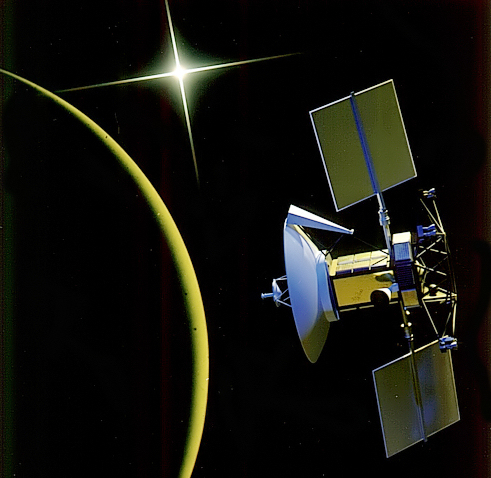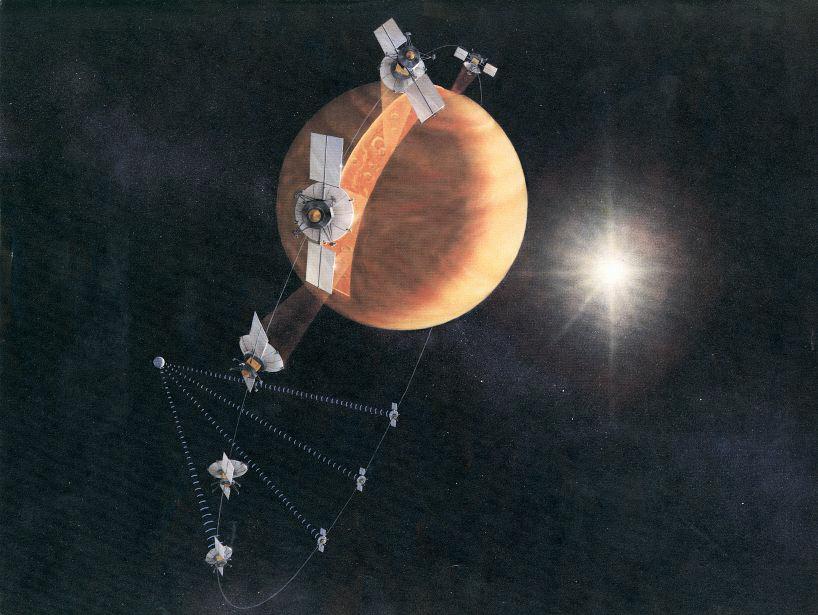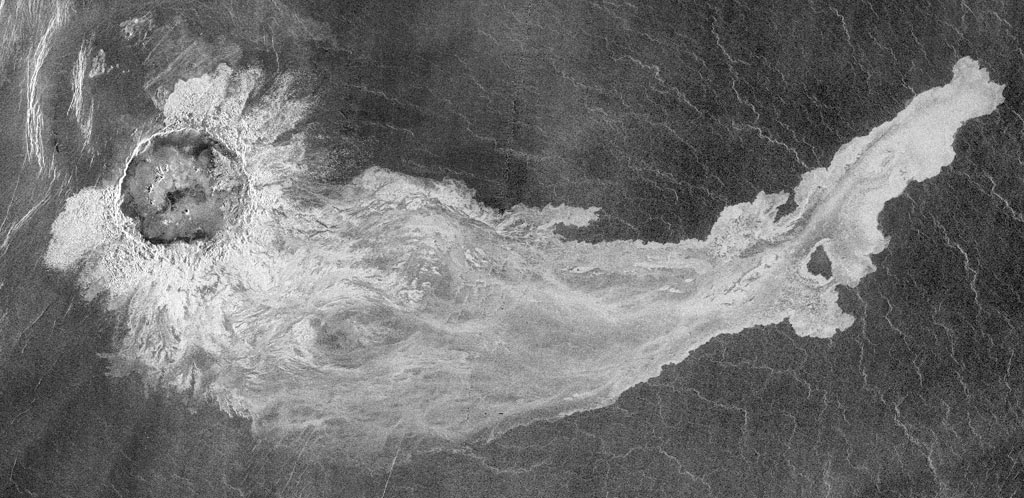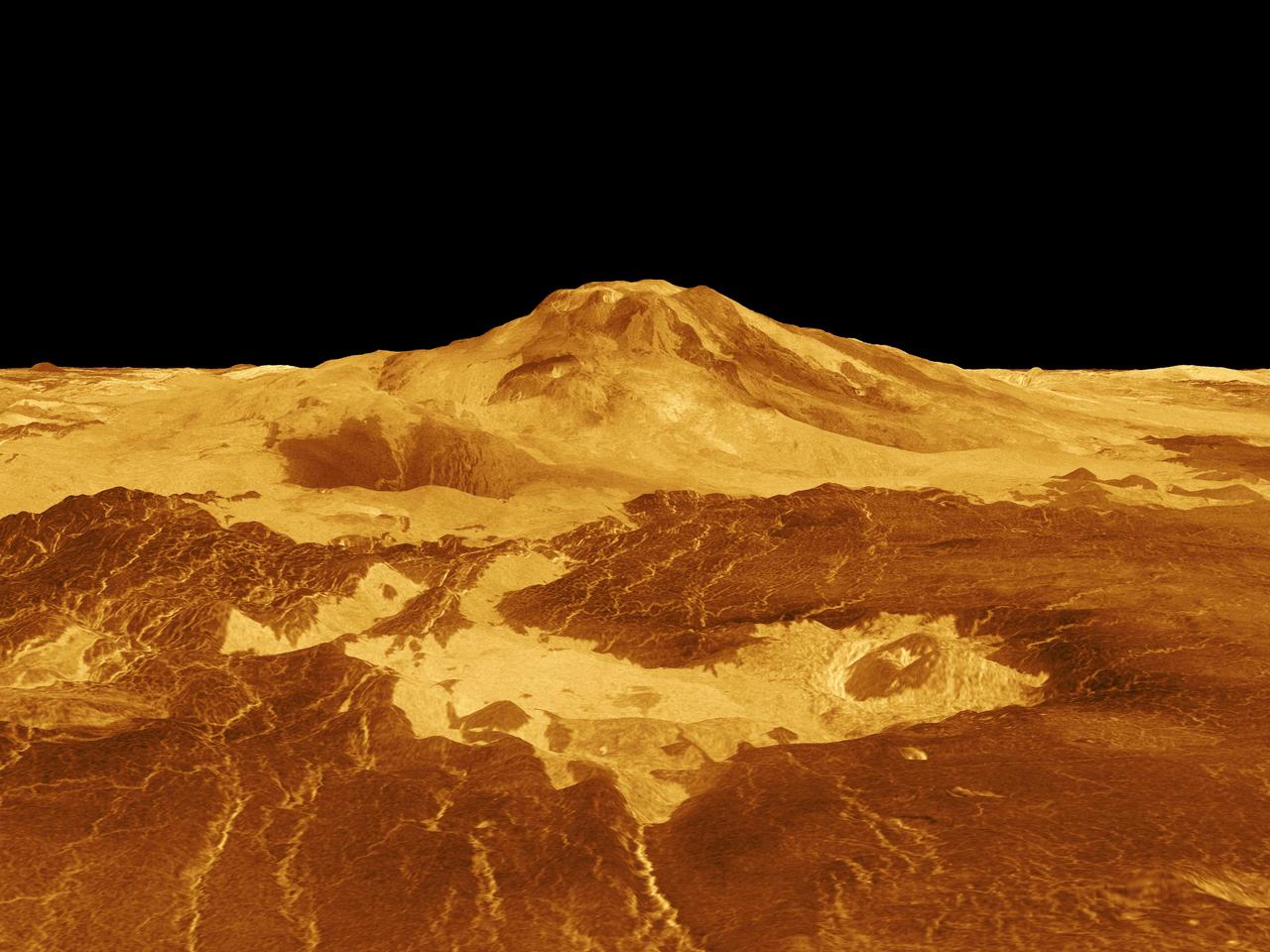Magellan’s Mission To Map Venus
Radar Eyes
The Magellan spacecraft, launched into space aboard the payload bay of Shuttle Atlantis, would peer through Venus’ thick clouds and make the first detailed map of the surface and the planet's gravity field. The mission revealed Venus’ surface was covered with relatively young lava flows, from planet-wide volcanic eruptions. After completing 4 years in orbit, Magellan was intentionally plunged into Venus’s atmosphere to gather data about it before burning up.
Fast Summary Facts About The Magellan Mission!
- Type: Orbiter
- Destination: Venus
- Status: Complete – Deorbited
- Launch Location: Kennedy Space Center, Florida
- Launch Date: May 4th 1989
- Venus Arrival: August 10th 1990
- End Of Mission: October 13th 1994
- Mission Duration: 15-month cruise, 4 years 2 month in orbit
Fun Facts About Magellan's Venus Mission!
- The primary objective of the Magellan mission was to map 70 percent of the surface of Venus with radar down to a resolution of 120 to 300 meters and determine the topographic relief of the planet.
- The secondary objective was to create a planet-wide gravity map of the planet which was completed after the radar imaging phase had finished.
- At launch, Magellan weighed approximately 3,450 kilograms (7,605 lb) (including its propellant) and was launched in the payload bay of Space Shuttle Atlantis, the first interplanetary spacecraft launched by a Space Shuttle.
- It was also the first spacecraft to use the Inertial Upper Stage booster for launching from Earth orbit.
- Magellan was the 5th successful NASA probe to visit Venus and the first interplanetary NASA probe in 11 years.
- The spacecraft was inserted into a near-polar highly elliptical orbit, measuring 297 x 8,463 kilometres at 85.5° completing an orbit every 3 ¼ hours!
- The probe utilized solar panels for power generation, producing about 1030 Watts.
- The spacecraft returned high-quality radar images of the Venusian terrain that showed evidence that at least 85 percent of the Venusian surface is covered with volcanic flows. They also revealed evidence of tectonic movement, turbulent surface winds, long lava channels and funny looking pancake-shaped domes!
- At the completion of the three radar mapping phases, 98% of the surface had been imaged at resolutions better than 100 m!
- Magellan became the first space probe to demonstrate the use of ‘aerobraking’ as a technique to circularize the spacecraft's orbit to conserve fuel.
- To collect data about the atmosphere, the spacecraft was instructed to plunge towards Venus’ surface where Magellan burnt-up bringing an end to one of the most successful deep space missions in NASA’s history.
- The Magellan mission cost a total estimated to be around USD $680 million.









Shuttle Launched Magellan
Interplanetary Tour
Magellan Arrives
Magellan
Surface of Venus
Spider Crater
Venus Impactor
Addams Crater
Mountains on Venus












